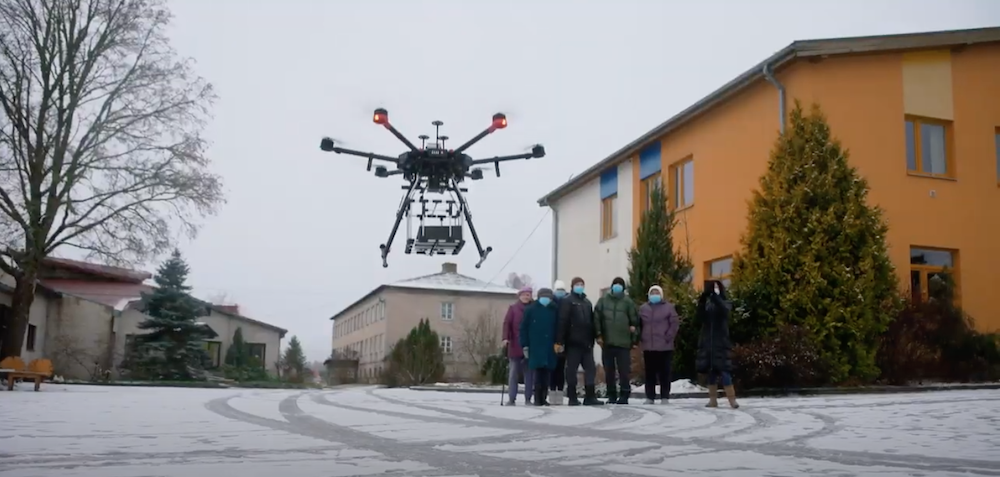LMT, SPH Engineering, and DPD Latvija have successfully completed the first-ever parcel delivery by drone in Latvia. The flight, which was conducted entirely on a mobile network in December 2020, used a remote ID device prototype made by LMT, as well as UgCS drone mission and route planning software by SPH Engineering.
The drone’s delivery flight took gifts to the residents in various social care centers in Latvia. The seniors received tablets from LMT packed with useful apps to help communicate with relatives, follow the news and learn new skills online.
LMT’s remote ID prototype is a drone-mounted device that enhances the drone with remote flight capabilities. Its SIM card provides two functionalities – remote identification and location tracking of the UAV according to the GPS signal. Combined, they offer additional security and transparency, making beyond the visual line of sight (BVLOS) flights possible.
The combination of the LMT remote ID device with the UgCS route planning makes remote drone flight possible. Because the drone and flight path data is available to everyone involved, it paves the way for the implementation of remote UAV flights without compromising security. The drone pilot in a command center, flight security observers and anyone else who needs to observe or coordinate BVLOS flights have access to the necessary data via a prototyped site, available on computers or smart devices.
Ingmārs Pūķis, LMT vice president, commented, “Using a UAV to deliver parcels is a great example of how technologies serve people. In cooperation with international partners, LMT is actively working towards promoting safer drone flights BVLOS on mobile networks.”
Fast-paced global digital transformation calls for new products and services that require the full use of drone technology and mobile networks. The majority of UAV commercial flights in the future could be conducted BVLOS. For now, such drone flights aren’t prevalent due to the legal regulations that allow only drone flights within direct visual sight because of safety concerns. However, in research and testing cases, permission for a drone flight BVLOS can be granted.
Moreover, mobile network connectivity improves such flights’ safety as the network accessibility in the air often exceeds the one on the ground due to the lack of obstructions. During 94% of the conducted drone delivery flights, the average network strength was -87.6dBm, which is a very good indicator by the cellular network provider standards.
“Drone delivery is turning into a new applicable global trend. Within the last few months, we have observed how delivery and mobile market players, both global and local, are joining efforts to introduce delivery solutions with UAVs. We are proud to contribute to the LMT and DPD initiative with UgCS technology and support drone deliveries across Latvia,” said Alexey Dobrovolskiy, CTO of SPH Engineering.
Watch the video of the first-ever remote delivery in Latvia completed by a UAV here.


